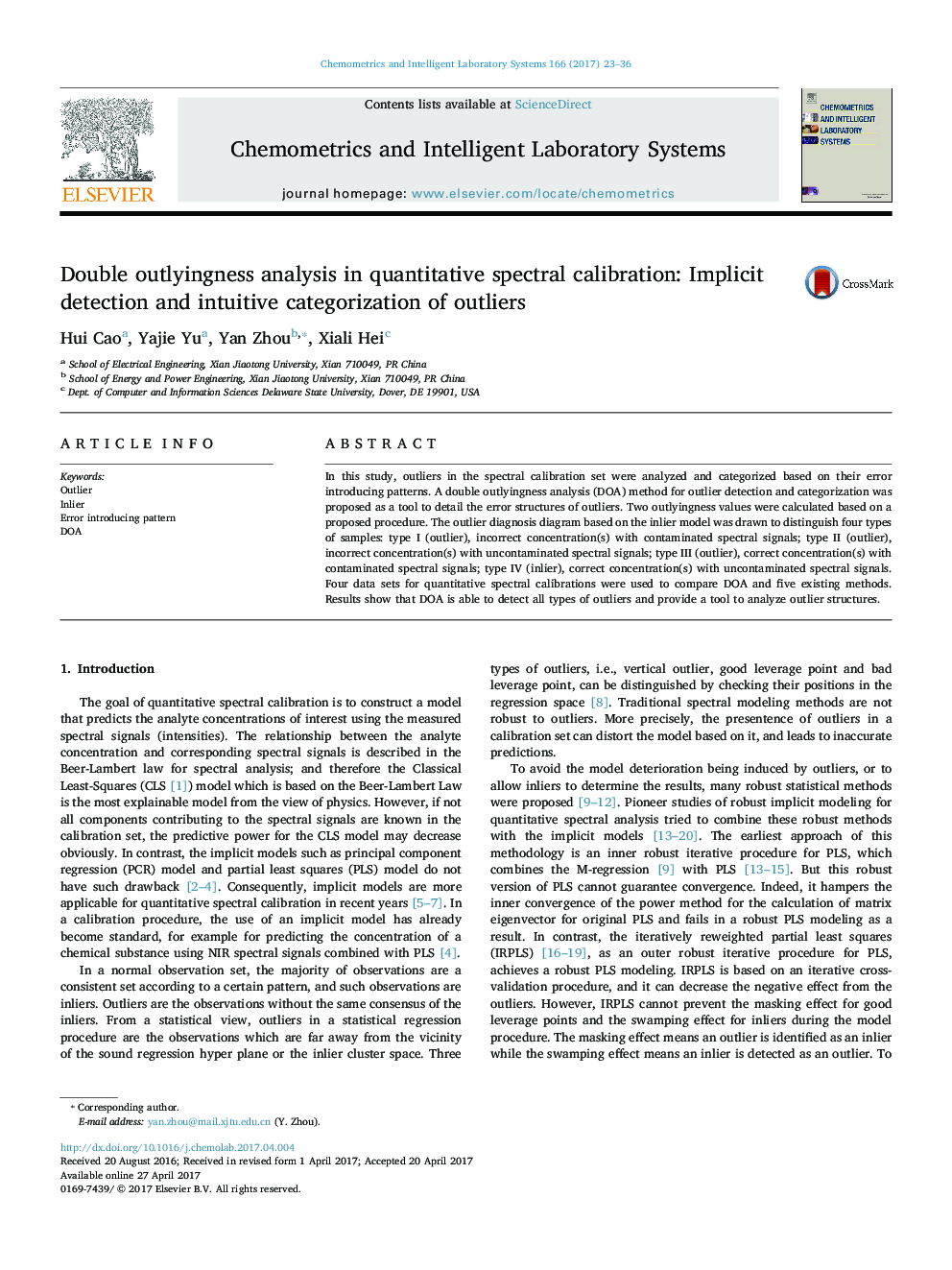| Article ID | Journal | Published Year | Pages | File Type |
|---|---|---|---|---|
| 5132214 | Chemometrics and Intelligent Laboratory Systems | 2017 | 14 Pages |
â¢Samples in the calibration set were categorized based on the outlying introduction pattern.â¢Outlying level was defined for samples.â¢A subsampling procedure was used to distinguish outliers from inliers.â¢Diagnosis diagram was drawn based on the inlier partial least squares model to categorize all samples.
In this study, outliers in the spectral calibration set were analyzed and categorized based on their error introducing patterns. A double outlyingness analysis (DOA) method for outlier detection and categorization was proposed as a tool to detail the error structures of outliers. Two outlyingness values were calculated based on a proposed procedure. The outlier diagnosis diagram based on the inlier model was drawn to distinguish four types of samples: type I (outlier), incorrect concentration(s) with contaminated spectral signals; type II (outlier), incorrect concentration(s) with uncontaminated spectral signals; type III (outlier), correct concentration(s) with contaminated spectral signals; type IV (inlier), correct concentration(s) with uncontaminated spectral signals. Four data sets for quantitative spectral calibrations were used to compare DOA and five existing methods. Results show that DOA is able to detect all types of outliers and provide a tool to analyze outlier structures.
